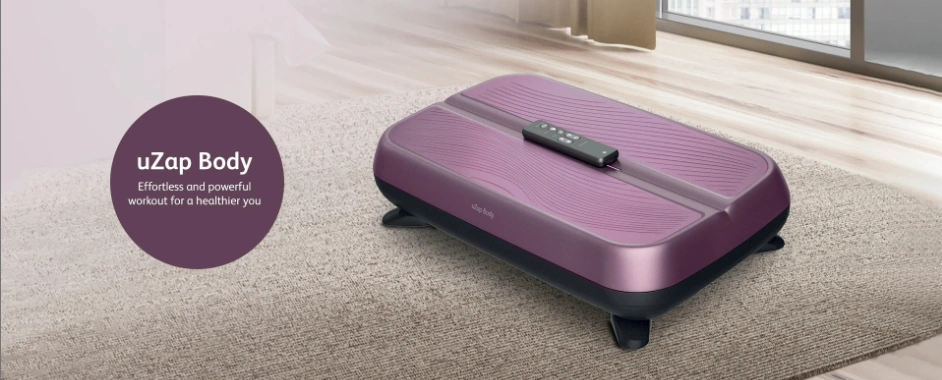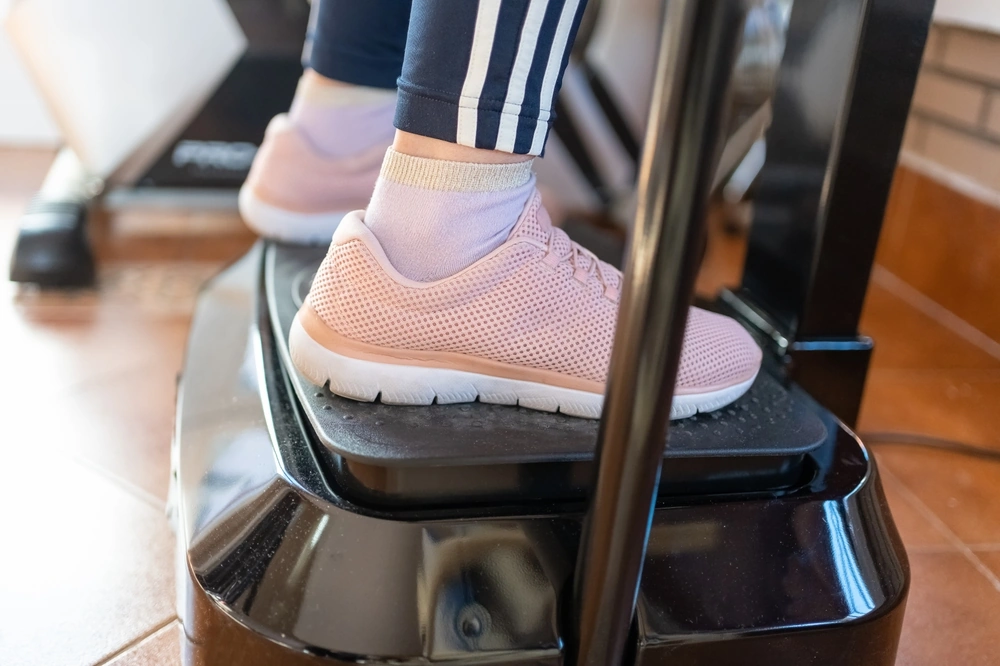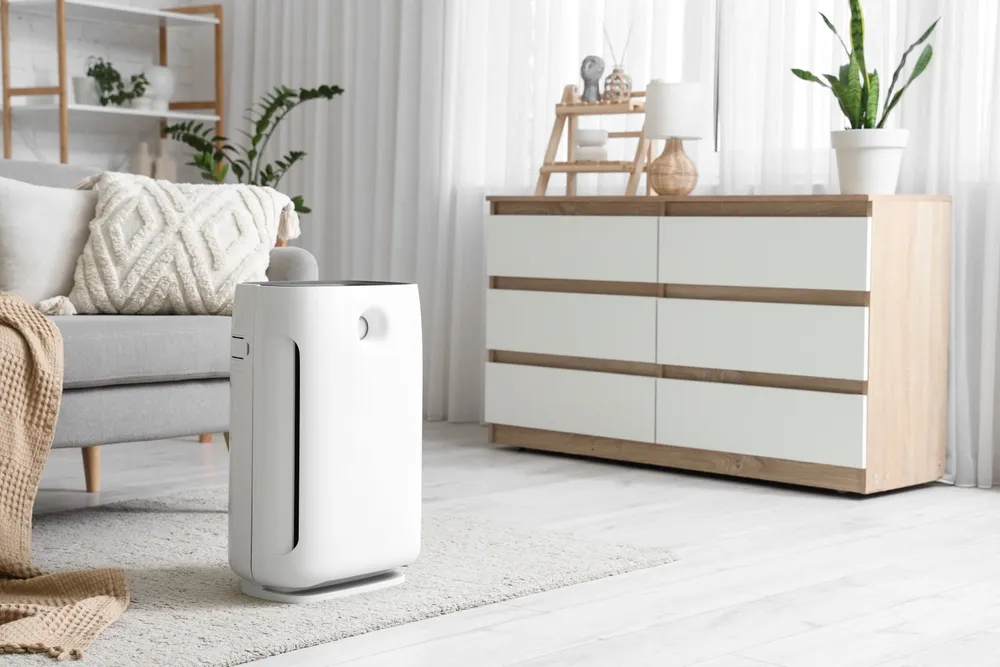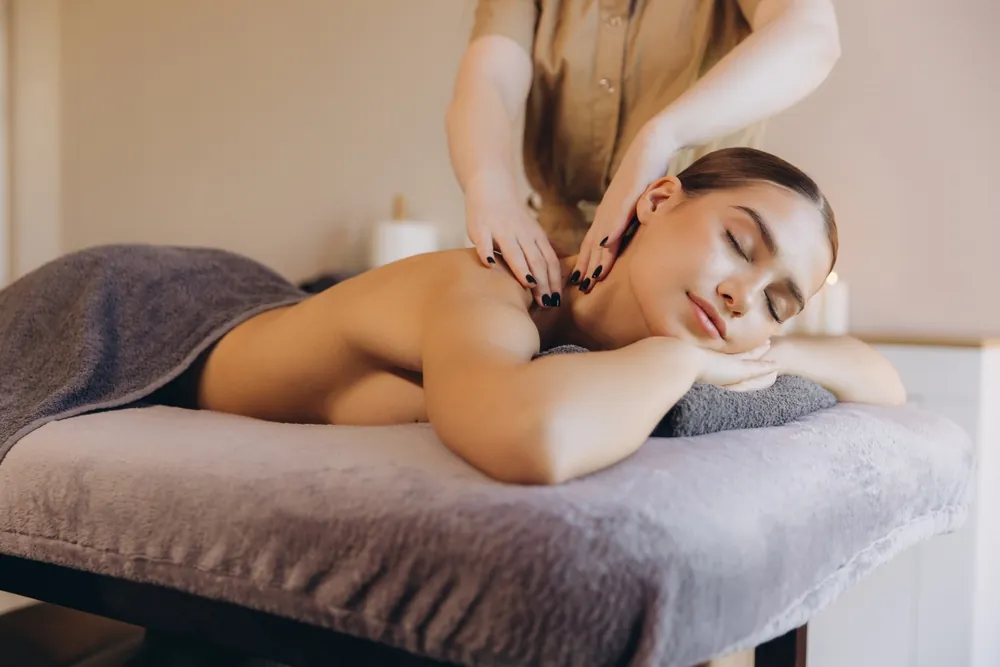Vibration therapy is gaining widespread interest as an efficient and accessible wellness solution. Often associated with professional rehabilitation and elite training environments, it is now becoming part of regular health routines for people of all ages. Its appeal lies in its simplicity. Short sessions can lead to significant physiological benefits.
But what does vibration therapy do, exactly? The process uses mechanical vibrations to stimulate the muscles, circulation and nervous system. These effects may support recovery, improve mobility and offer stress relief, especially when used consistently. Whether through a vibration plate or a targeted massage device, this therapy works by prompting natural bodily responses that contribute to overall wellness.
In this article, we explore what vibration therapy does to the body, how it works and how it can be safely integrated into your daily life.
What Exactly Is Vibration Therapy?
Vibration therapy is a technique that involves applying mechanical vibrations to the body to stimulate muscle activity, circulation and nerve response. The method is widely used in both clinical and wellness environments for its ability to produce results in short, manageable sessions.
Types of Vibration Therapy
There are two primary forms of vibration therapy:
- Whole-body vibration: Involves standing, sitting or lying on a vibrating platform. The vibrations travel through the body, causing muscles to contract and relax involuntarily.
- Targeted vibration therapy: Uses handheld or built-in devices that apply vibration to a specific part of the body, such as the lower back, shoulders or thighs.
Each approach offers distinct benefits depending on the user’s needs and physical condition.
Frequency and Muscle Response
Vibrations used in therapy typically range between 15 and 60 hertz. At the correct frequency, the body responds with reflexive muscle contractions. These actions stimulate deeper muscle fibres that are not always engaged during everyday activity or low-intensity exercise.
This form of stimulation can support improved muscle tone, better flexibility and enhanced balance. It does so with minimal physical effort, making it ideal for individuals who may struggle with conventional forms of exercise.
Common Applications
Vibration therapy is used in various contexts, including:
- Sports recovery
- Physiotherapy and rehabilitation
- Circulation support
- Mobility and flexibility enhancement
- Postural correction
While it is not a replacement for physical activity, it functions well as a complementary tool. Its versatility and efficiency make it a valuable option in modern wellness practices.
What Does Vibration Therapy Do Inside the Body?
Vibration therapy works by triggering involuntary muscle contractions through mechanical stimulation. These micro-movements influence several systems in the body, leading to benefits across muscular strength, circulation and neurological function.
Muscle Contraction and Reflex Response
Understanding what vibration therapy does involves examining how it activates the body’s reflexes. When exposed to vibration, muscles contract and relax involuntarily, engaging fibres that support posture and stability. These reflexes, triggered by consistent use, can help build muscular endurance without placing excess strain on the joints.
By studying what does vibration therapy do to muscle groups, researchers have found that it activates not only superficial muscles but also deep stabilisers. This makes it particularly useful for postural control and injury prevention.
Circulatory and Lymphatic Effects
Vibration therapy stimulates blood flow by promoting rhythmic muscle activity. This helps oxygen and nutrients reach tissues more effectively, supporting energy production and muscle recovery.
It may also assist the lymphatic system, which depends on muscle movement to circulate fluid. Enhanced lymph flow can contribute to reduced swelling and the removal of cellular waste.
Neuromuscular Coordination
The vibrations stimulate sensory receptors in the muscles and tendons, enhancing communication between the nervous system and the muscles. This improved neuromuscular coordination helps with balance, body awareness and motor control.
These effects are particularly useful for older adults or individuals recovering from injury. In some clinical settings, vibration therapy has been shown to support better walking patterns and reduce fall risk.
Comparison to Physical Activity
Vibration therapy does not replace traditional exercise, but it can produce similar effects to light activity. Studies suggest that a ten-minute session on a vibration platform may offer benefits comparable to low-intensity aerobic exercise, such as walking.
This makes it an ideal alternative or supplement for people with limited mobility, fatigue or those easing back into physical activity after injury.
Safety and Precautions
Vibration therapy is safe for most people when used appropriately, but there are a few considerations that users should be aware of.
Who Should Use Caution
Some individuals should consult a healthcare professional before using vibration therapy, including:
- Those with pacemakers or implanted medical devices
- People recovering from recent surgeries or fractures
- Pregnant women, particularly in the early stages
- Anyone with severe osteoporosis or advanced joint conditions
These conditions may increase the risk of adverse reactions to vibration.
Frequency and Duration
Most users benefit from sessions lasting between ten and fifteen minutes. This duration is enough to stimulate muscle activity and improve circulation without causing fatigue.
Longer sessions, especially those exceeding thirty minutes, may result in soreness or discomfort and are generally not necessary for effective results. Beginners should start slowly and adjust intensity as they become more comfortable.
Choosing the Right Equipment
Well-designed devices are essential for safe and effective vibration therapy. Quality equipment should include:
- Adjustable vibration settings
- Solid construction with stable platforms or support
- Clear guidance on proper use
Using poorly made equipment or ignoring instructions increases the risk of joint strain or ineffective treatment.

OSIM uZap Body
Potential Drawbacks of Vibration Plates
Although vibration therapy offers several benefits, there are some potential limitations:
- Overuse can lead to muscle fatigue, particularly in new users
- Poor posture during use may result in joint or lower back discomfort
- Some users may rely solely on vibration therapy instead of combining it with movement
- High-end platforms or chairs may require more space or investment
Being aware of these limitations ensures more balanced, informed use of the therapy.
Using Vibration Therapy Responsibly
Always pay attention to how your body responds. If symptoms such as dizziness, pain or persistent discomfort occur, it is best to stop and consult a professional.
When used as part of a broader wellness routine, vibration therapy is a low-impact and effective tool that supports circulation, muscle activation and overall well-being.
Vibration Therapy in Everyday Wellness
Vibration therapy is valued for how easily it can be incorporated into daily routines. Unlike intensive exercise or time-consuming treatments, it delivers results in short, consistent sessions. This accessibility makes it an attractive option for people seeking to improve their physical health with minimal disruption to their schedule.
Supporting Recovery and Circulation
A session lasting just 10 to 15 minutes can help stimulate circulation, especially in the lower limbs. This improved blood flow supports muscle recovery and reduces stiffness after physical activity. For those with sedentary lifestyles or limited mobility, vibration therapy provides a way to encourage circulation passively, aiding oxygen and nutrient delivery to tissues.
People who experience fluid retention or swelling, particularly in the legs and feet, may also benefit from the circulatory effects. These outcomes can be achieved using either whole-body vibration platforms or targeted devices, depending on personal preferences and physical needs.
Encouraging Mobility and Joint Comfort
Regular use of vibration therapy may contribute to improved flexibility and joint function. The gentle activation of muscles and tissues helps prepare the body for movement, making it easier to maintain an active lifestyle.
This is especially relevant for older adults, individuals with reduced range of motion, or anyone managing joint discomfort. Unlike high-impact activities, vibration therapy places minimal strain on the joints while still offering muscular stimulation.
Complementing Physical Activity
While vibration therapy is not a replacement for exercise, it can support and enhance physical activity. It may be used as a warm-up tool, to activate stabilising muscles, or as part of a cool-down to reduce post-workout soreness.
Compared to walking, vibration therapy stimulates a broader range of muscle fibres and engages the body’s neuromuscular system more directly. For those recovering from injury or managing fatigue, it serves as a valuable low-effort alternative that keeps muscles engaged.
A Considered Addition to Home Wellness
When selecting a vibration therapy solution for home use, comfort, reliability, and usability are key. Products that integrate multiple massage techniques with refined design offer a more complete wellness experience. These devices provide therapeutic benefits while fitting seamlessly into everyday life, whether used at the start of the day, after work or before bed.
Vibration therapy fits naturally into a wellness routine that prioritises physical care, stress management and convenience. Its simplicity is part of its strength.
The Value of Vibration Therapy
Vibration therapy offers a simple and effective way to support recovery, circulation, mobility and overall well-being. But what does vibration therapy do over time? With consistent use, even short daily sessions can lead to noticeable improvements. For those seeking a convenient and low-impact method to enhance their health, it is a valuable addition.
To bring these benefits into your home, explore OSIM’s range of premium wellness devices. OSIM massage chairs and targeted massagers use advanced vibration therapy to support your daily comfort and recovery.
Find a store nearest to you and start discovering how OSIM can help you experience the benefits of vibration therapy with ease.




